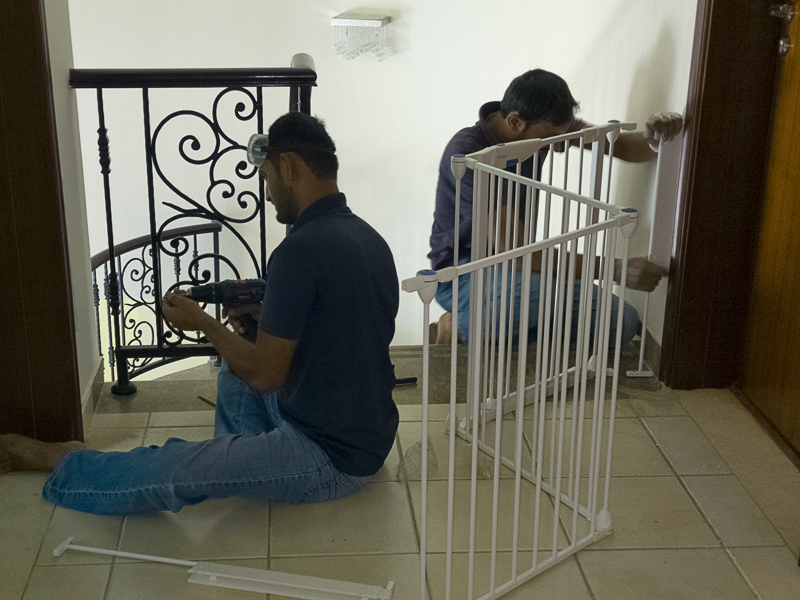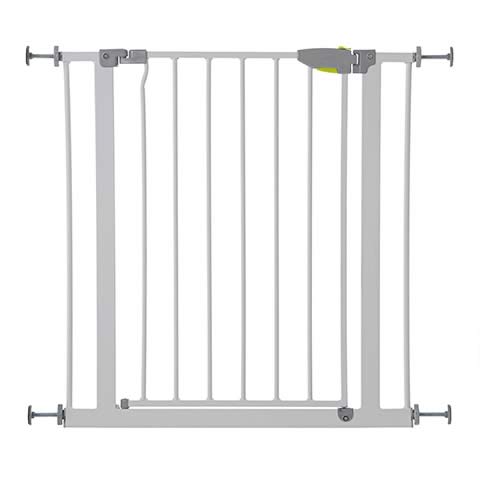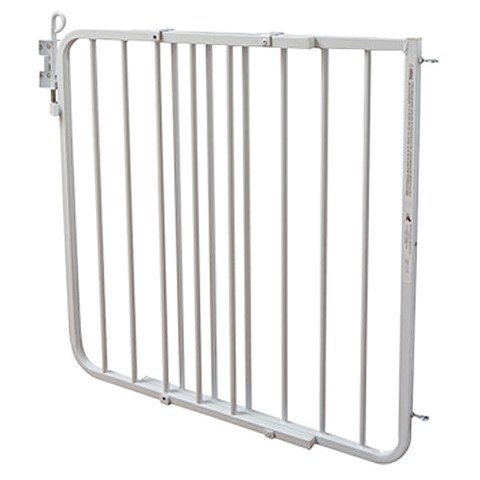Make your stairs safe

Here in the UAE there are some large and awkward staircases to deal with – staircases with low walls jutting out, recesses, railings, glass walls, and staircases that spread out grandly at the bottom but with no supports at all on the sides.
These features make it difficult to install gates simply and safely. We are familiar with all types and we can offer a range of gates and solutions for them all.
And safety gates are not only for the stairs. An open kitchen, for example, is very difficult to child proof completely with its danger from cupboards, drawers, knives, chemicals, falling objects, hot substances, machines, etc, but it is simple to stop unaccompanied access to the danger area with a gate or gated barrier. Or one gate across a corridor can block access to a kitchen, a utilities room and staircase to the basement. See our picture gallery and the safety gates area in our store…
2 types of safety gate…

- Pressure gates are fixed in place using pressure. You do not need a drill to install a pressure gate.
- Pressure gates have 4 ‘feet’ – one on each corner, top and bottom. The feet have small hand wheels. Twist the little wheels to increase or decrease the pressure into the walls or door posts.
- Before fitting the gate, you need to install four small holding cups on the walls and skirting board first. These can be attached using double-sided adhesive pads, or screwed into the wall if preferred.
- The gates are suitable up to about 80 cm width, but extensions can increase this to between 110 cm and 140 cm depending on the brand.
- On the plus side, pressure gates are usually cheaper than hard-fix gates. But take into account the price of extensions.
- On the down side, pressure gates have a bar at floor level, across the whole width. This can be a tripping hazard.
- Most safety authorities do not recommend pressure gates to be installed at the top of the stairs.

- Hard-fix gates are fixed in place by drilling into the wall and using screws.
- The gates can be suitable up to about 100 cm width, depending on the brand, but extensions can increase this to 150 cm or more.
- Hard-fix gates are usually more expensive than pressure gates, and also check the price of extensions.
- Hard-fix gates require drilling. Don’t always trust the supplied screws and plugs. They might not be long enough. In our experience, many walls in newer developments are of poor quality and crumble away easily!
- Hard-fix gates do not have a bar at floor level.
- These gates are recommended for the top of the stairs.
- Check for large gaps between the rails – the recommended maximum is 10 cm
- If your railings area consists of ornate scrollwork, check for large open areas and also for protruding pointed features.
- One of the worst design gaffes, from a child safety point of view, is horizontal rails – i.e. railings that are like step ladders or climbing frames!
- Are the railings or wall high enough to prevent climbing or accidents? 90 cm from floor to top is considered adequate but…
- …check you have no furniture or climbable objects nearby.
We recommend plexiglass shielding or Netzen safety netting depending on the peculiarities of the site. These can both be used to secure gaps in the railings, and also to increase the height of railings or walls.
